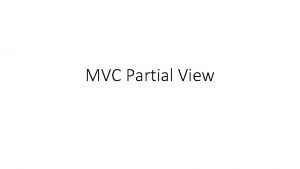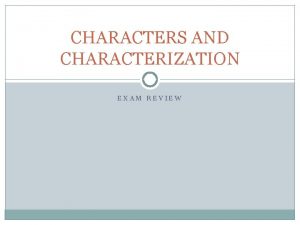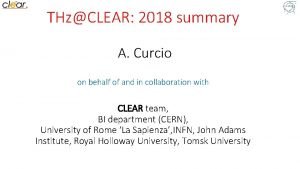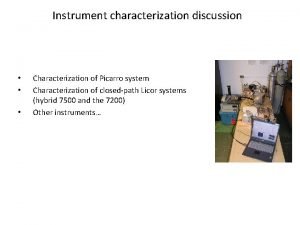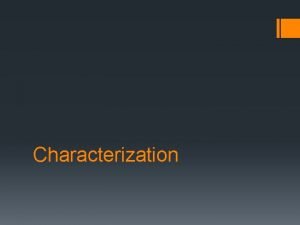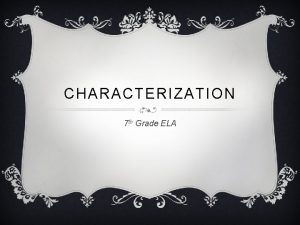THzCLEAR Generation and characterization in view of THzelectron










- Slides: 10

THz@CLEAR: Generation and characterization in view of THz-electron interaction experiments Alessandro Curcio (Fellow) BE-ABP-LAT, supervisor: Roberto Corsini CERN In collaboration with: Dr. Thibaut Lefebvre BE-BI-QP (CERN) Prof. Massimo Petrarca (Università La Sapienza)

Outline First tests of generation @ CLEAR: Coherent Cherenkov Radiation (CCR) Calculations, experimental setup and detectors Other application: longitudinal beam diagnostics Conclusions and perspectives

First tests of generation @ CLEAR: CCR Beam parameters (single bunch): -Energy=200 Me. V -r. m. s. duration: 3 -4 ps -r. m. s. size: below 100 micron -Charge: 100 p. C Radiator parameters: In our case the Cherenkov o angle is 65 -Diamond crystal -Thickness : 2 cm -Index of refraction: 2. 38 -THz and sub-THz absorption: negligible -Radiation length: 12 cm

Calculations (single bunch) With r. m. s. duration 4 ps the spectral peak is around 50 GHz (sub-THz !), The total irradiated energy around 160 n. J In order to get u. J THz pulses a r. m. s. duration below 1 ps is needed With r. m. s. 150 fs and 100 p. C, u. J emission at THz frequencies! With n. C bunch, hundreds u. J, corresponding to hundreds MV/m gradients!

Calculations (train of bunches) Train of ten bunches Higher harmonics in the spectrum up to 0. 1 THz 666 ps temporal distance Total irradiated energy: 0. 5 u. J

Experimental setup Planar target: Prism target In order to extract CCR from the crystal: - For materials with index of refraction greater than square root of 2 the electron incidence cannot be normal to the surface (planar targets); - A second possibility is to use prism-shaped targets. Why? Total reflection

Detectors for sub THz: Schottky diodes working Band-Pass-Filters in the range 20 -100 GHz Schottky diodes are useful detectors in the range of our interest: - They allow a measurement of the radiation amplitude within a specific solid angle; - Coupled with band-pass-filters they can allow the measurement of the radiation amplitude within a specific solid angle and frequency-band. - With an absolute calibration they allow a measurement of the absolute number of photons emitted by CCR The final goal is that to characterize the source spectrally, angularly and in photon yield

Main preliminary goals Spectral-angular characterization of the CCR Absolute measurement of the photon yield Use of the CCR as electron longitudinal diagnostics

Longitudinal diagnostics One way is to completely characterize the CCR spectrum, retrieving then from there the bunch form factor and therefore the bunch length (no single shot!) A second way is to detect the CCR signal S at least with two detectors (angle of collection and photon energy must be different for different detectors), then taking the ratio between signals, comparing with theory and finding the bunch length which minimizes the difference between theory and experiment: (single shot!) Ratio between two signals Theoretical expectation for the signal ratio due to a gaussian bunch

Conclusions and perspectives Preliminary tests are planned with the current parameters of CLEAR, in order to initiate a THz (and sub-THz) activity, in the begininng characterizing the source in terms of spectral-angular emission and photon yield. Very high photon fluxes (tens of u. J @ 1 THz) can be reached with an electron bunch length below 1 ps r. m. s. and electron charge per single bunch greater than 100 p. C. Applications of THz radiation @ CLEAR for electron acceleration, electron-plasma acceleration and plasma diagnostics are currently under developement. Before starting any THz-based experiment @ CLEAR, a complete characterization of the CLEAR -based THz source is needed, which is the plan of next months.
 First generation antipsychotics vs second
First generation antipsychotics vs second Lord you are good and your mercy is forever
Lord you are good and your mercy is forever Direct and indirect characterization
Direct and indirect characterization What does indirect characterization mean
What does indirect characterization mean Birds eye view angle
Birds eye view angle Simple view and complex view
Simple view and complex view Simple view and complex view
Simple view and complex view Simple view and complex view
Simple view and complex view Partial view in mvc
Partial view in mvc Cycle view and push pull view
Cycle view and push pull view Operating system components
Operating system components








